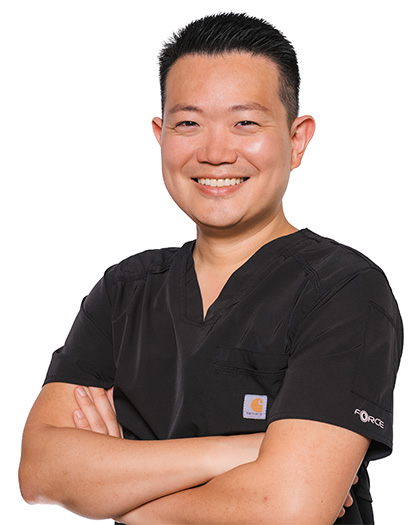A healthy smile is your gateway to confidence and overall wellness. While professional dental care is essential, most of your oral health depends on consistent home care habits. Here’s your comprehensive guide to maintaining optimal dental health between dental visits:
1. Master the Art of Brushing
Brush twice daily using a soft-bristled toothbrush and fluoride toothpaste. Hold your brush at a 45-degree angle to your gumline and use gentle circular motions—aggressive brushing can damage your enamel and gums. Spend 30 seconds on each quadrant of your mouth (total 2 minutes):
- Morning: Brush after breakfast, waiting 30 minutes if you’ve had acidic foods
- Evening: Brush before bed to remove the day’s accumulation of bacteria
- Technique: Clean all surfaces—outer, inner, and chewing surfaces
- Extra care: Use a separate gentle motion to brush your tongue and the roof of your mouth
- Tools: Consider an electric toothbrush with a pressure sensor and timer for optimal results
2. Perfect Your Flossing Technique
Daily flossing is crucial for removing plaque and food particles from areas your toothbrush can’t reach. Use about 18 inches of floss to ensure a clean section for each tooth:
- Wrap most of the floss around your middle fingers, leaving 1-2 inches to work with
- Use your thumbs and index fingers to guide the floss
- Curve the floss in a C-shape around each tooth, sliding gently below the gumline
- Alternative options for those with dexterity issues:
- Water flossers (especially good for bridges and braces)
- Floss picks (ideal for on-the-go cleaning)
- Interdental brushes (perfect for wider spaces between teeth)
3. Choose the Right Mouthwash
Not all mouthwashes are created equal. Select products based on your specific needs:
- Therapeutic mouthwashes containing fluoride: Use once daily to strengthen enamel
- Antimicrobial rinses: Best for controlling gingivitis and bad breath
- Timing matters: Wait 30 minutes after brushing with fluoride toothpaste before using mouthwash to avoid washing away concentrated fluoride
- For dry mouth: Choose alcohol-free formulations
- For sensitive teeth: Look for rinses with potassium nitrate
4. Make Smart Dietary Choices
Your diet directly impacts your oral health. Make these smart choices:
- Limit acidic and sugary foods/drinks to mealtimes only
- Hidden sugar alert: Watch out for “healthy” foods like dried fruits, granola bars, and yogurt drinks
- Tooth-friendly snacks:
- Cheese (increases pH and provides calcium)
- Crunchy vegetables (natural teeth cleaners)
- Nuts (contain minerals that strengthen teeth)
- Sugar-free gum with xylitol (stimulates saliva production)
- Wait 30-60 minutes after acidic foods before brushing to protect softened enamel
5. Maximize Water’s Benefits
Water is nature’s cavity fighter. The role of fluoride in dental health is particularly important – learn more about fluoride safety and benefits in dentistry:
- Drink fluoridated water when possible (check your local water report)
- If using filtered water, ensure your filter doesn’t remove fluoride
- Rinse with water after meals when brushing isn’t possible
- Stay hydrated to maintain healthy saliva production
- Consider adding a pinch of salt to water for a natural antibacterial rinse
- Use water to take medications instead of acidic beverages
6. Protect Against Harmful Habits
Beyond tobacco, protect your teeth from:
- Grinding/clenching: Consider a night guard
- Sports injuries: Wear a mouthguard during athletic activities
- Nail biting: Can chip teeth and transfer bacteria
- Using teeth as tools: Never open packages or bottles with your teeth
- Ice chewing: Can crack enamel and damage dental work
7. Maintain Your Dental Tools
Proper care of your dental tools ensures effective cleaning:
- Replace toothbrushes/brush heads every 3-4 months or sooner if:
- Bristles are frayed
- You’ve been sick
- You’ve dropped it on the floor
- Store brushes upright in open air to prevent bacterial growth
- Sanitize tools monthly by soaking in hydrogen peroxide
- Clean water flossers according to manufacturer instructions
- Replace floss holders and interdental brushes regularly
8. Optimize Professional Care
Make the most of professional dental care. Understanding your dental insurance options and coverage can help you plan better for your oral health needs:
- Schedule cleanings every 6 months (more frequently if recommended)
- Keep a dental calendar marking:
- Cleaning appointments
- When to replace dental tools
- Daily flossing records
- Know the warning signs requiring immediate attention:
- Bleeding gums
- Persistent bad breath
- Tooth sensitivity
- Loose teeth
- Discuss cost-saving options with your dentist:
- Payment plans
- Dental savings plans
- Preventive care priorities
- Local dental schools for reduced-cost care
Conclusion
Remember: Prevention is always less expensive and less painful than treatment. If you’re experiencing any dental discomfort, don’t wait – understanding what your toothache might be telling you can help you seek appropriate care sooner rather than later. These habits might seem time-consuming at first, but they’ll become second nature with practice. Your future self will thank you for the investment in your oral health!



